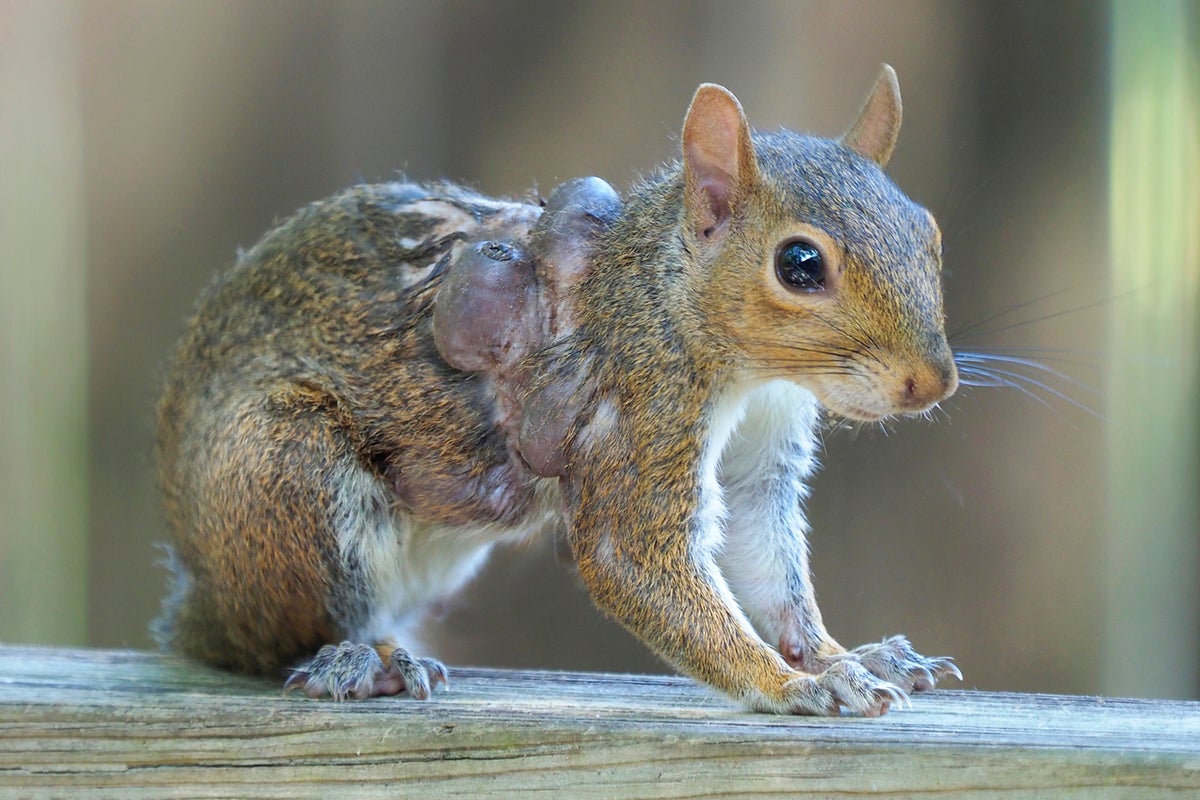
Just days after a so-called “Frankstein bunny” was spotted in northern Colorado, reports surfaced of another eerie creature in North America: a “zombie squirrel.”
Gray squirrels covered in bulging, hairless tumors have been sighted across states like Maine and parts of Canada in recent months, according to The Daily Mail’s analysis of social media posts.
While users have commented on the rodents’ “zombie”-like appearance, wildlife experts have said the wart-like lesions appear to be consistent with a condition called squirrel fibromatosis.
The virus belongs to the Leporipoxvirus genus within the Poxviridae family, the same group that includes the myxoma virus, which causes myxomatosis in rabbits.
It often gets confused with squirrelpox, which is caused by another virus carried harmlessly by gray squirrels but can fatally infect native red squirrels in the U.K.
According to the Mail, experts have not yet confirmed whether the new sightings are cases of fibromatosis or squirrelpox, though the latter is considered to be less likely to spread in the U.S.
While squirrel fibromatosis might look terrifying, it’s a common, often non-lethal skin disease.
The virus spreads through direct contact between healthy squirrels and the lesions or saliva of infected squirrels – often at feeding tables – and biting insects such as mosquitoes and fleas.
It can appear anywhere on the animal’s body, but is most common on the face and limbs. The growths usually regress on their own in several weeks or months.
Shevenell Webb of Maine’s Department of Inland Fisheries and Wildlife told Bangor Daily News that residents who come across a “zombie squirrel” have little to fear as neither squirrel fibromatosis nor squirrelpox is believed to be transmissible to humans, domestic pets, or birds.
Leaving the squirrels alone is the best strategy, Webb said, noting that for the most part, the animals “are just really ugly to look at.”
It comes after earlier reports this month of rabbits in Fort Collins, Colorado, alarming residents with black-colored growths resembling tentacles or horns protruding from their heads.
Photos of rabbits with anter-like nodules have gone viral, drawing comparisons to “zombies,” “aliens,” and “Frankenstein bunnies.”
Amanda Gilbert, a 9NEWS Northern Colorado reporter, captured a photo of one rabbit with the growth on its head, which resident Susan Mansfield said looked like “black quills or black toothpicks sticking out all around his or her mouth.”
Colorado Parks and Wildlife officials have identified the cause as shope papillomavirus, a rabbit-only virus with no cure that produces wart-like tumours known as papillomas, particularly around the face and head of cottontail rabbits, the news station reports.
Like squirrel fibromatosis, the virus only spreads among its kind, primarily by biting insects like fleas and ticks during warmer months.
A relative of human papillomavirus, SPV is not harmful to humans, pets, or other wildlife, and usually doesn’t hurt the rabbit unless it affects the eyes or mouth, officials said.
